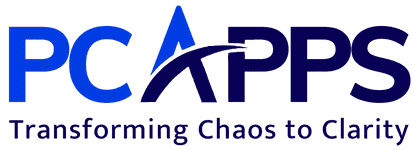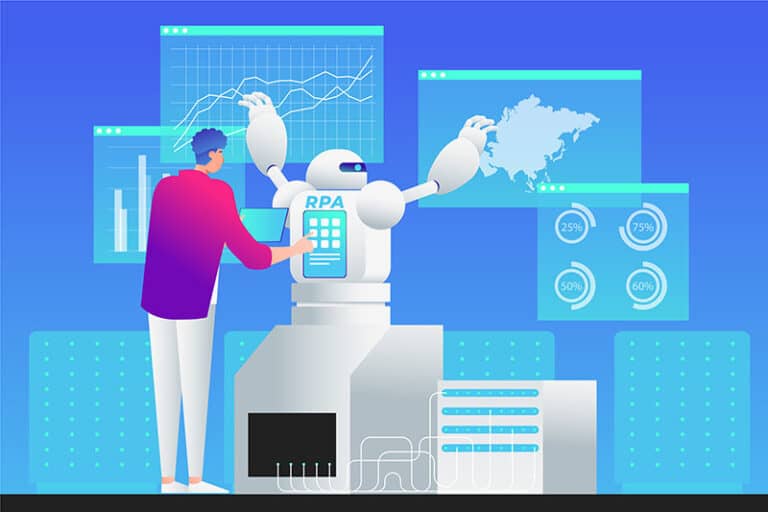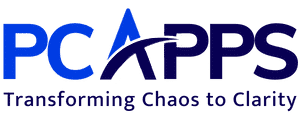A Step-By-Step Approach for Measuring Software Quality
As our world grows increasingly digital, the quality of software products has become a vital determinant of success for businesses across all industries. Software quality is not just about ensuring that an application runs smoothly—it is about creating user-friendly, efficient, and reliable program that improves productivity and business outcomes.
A clear, step-by-step approach is essential to ensuring software quality as it provides a structured way to identify and address any gaps in software performance, functionality, reliability, usability, efficiency, maintainability, and portability.
PCApps mission is to empower businesses by developing custom software solutions that not only meet but exceed expectations. At PCApps, we blend a unique approach to software development with rigorous quality assurance processes. We believe in a continuous cycle of development, measurement, improvement, and innovation, which ensures that our software products consistently deliver superior performance.
In this blog post, we will take you through a comprehensive step-by-step approach to measuring software quality, providing practical guidance to help businesses build software products that stand the test of time and competition. Join us as we unravel the complex web of software quality and reveal how it can be measured, managed, and improved to propel your business forward.
Understanding Software Quality
Software quality is a multifaceted concept that goes beyond simple bug-free operation. It refers to the degree to which software satisfies specified requirements, meets user needs and expectations, and is maintainable. To better grasp this concept, let’s delve into the various elements that constitute software quality.
First, performance speaks to the speed, response time, and resource consumption of a software application. Good performance ensures that the software can handle the required load efficiently, thus enhancing user experience.
Functionality, the next element, focuses on the ability of the software to perform its intended functions correctly and completely. It also considers the feature set provided by the software and its compatibility with other systems.
Reliability is the software’s ability to perform consistently under specified conditions. It ensures that the software can recover from potential failures without significant disruption to the user.
Usability refers to the ease with which a user can learn, understand, and use the software. A user-friendly software increases productivity and reduces user frustration.
Efficiency is the capability of the software to provide desired functionality with the least waste of resources, such as time, space, and human effort.
Maintainability is about the ease with which the software can be modified to correct faults, improve performance or other attributes, or adapt to a changing environment. Finally, portability is the ease with which the software can be transferred from one environment to another.
These elements of software quality are not standalone. They interrelate and contribute towards achieving business outcomes. High-quality software provides a seamless, efficient, and effective service, leading to improved productivity, customer satisfaction, and ultimately, increased profitability. By aligning software quality with business goals, organizations can drive success and maintain a competitive edge in their respective markets. At PCApps, we firmly believe that understanding and implementing these elements is the first step towards a successful software project.
The Importance of Measuring Software Quality
While software quality is undoubtedly a critical component in achieving business success, not adequately measuring, and managing it can lead to detrimental effects. Poor software quality can result in significant operational inefficiencies, increased costs due to rework, loss of customer trust, and potential damage to the brand’s reputation. For instance, if a financial software application is unreliable or exhibits poor performance, it may lead to transaction errors, leading to customer dissatisfaction and potentially severe financial losses.
Measuring software quality enables businesses to make informed, data-driven decisions. It allows the detection of defects early in the development process, reducing the cost and effort required to fix them at later stages. By identifying areas of improvement, businesses can prioritize efforts towards those software attributes that matter most to their users and their operational efficiency. Over time, a consistent measure of software quality will lead to iterative improvements in the software, delivering higher value to end-users, and better business outcomes.
At PCApps, we emphasize the importance of measuring software quality, not as an afterthought, but as an integral part of the software development process. This proactive approach to quality assurance ensures the development of superior software products that support business growth and innovation.
Step-By-Step Approach to Measuring Software Quality
Embarking on a journey towards high-quality software requires a structured approach. Here at PCApps, we follow a comprehensive eight-step process for measuring software quality:
- Requirement Analysis: The journey starts with a thorough requirement analysis. It involves establishing clear and detailed software requirements, which are the bedrock of high-quality software. By understanding what the software is intended to achieve, we can establish the quality benchmarks that the software must meet.
- Design and Architectural Review: The next step involves a comprehensive review of the software’s design and architecture. This process ensures that the software is structured in a way that allows it to meet its performance, functionality, and reliability goals. An efficient design helps in easy maintainability and future upgrades, thus contributing significantly to software quality.
- Code Review & Analysis: In this step, the actual lines of code are scrutinized. Code reviews help detect and fix bugs early on, enforce coding standards, and improve the overall quality of the code. They also provide an opportunity to assess the code’s maintainability, one of the key elements of software quality.
- Testing: Rigorous testing plays a critical role in measuring software quality. This involves a mix of unit testing, integration testing, system testing, and acceptance testing. Each of these tests serves a unique purpose in ensuring that the software behaves as intended and meets the defined requirements.
- Performance Evaluation: Performance under varying conditions and loads is a significant determinant of software quality. By stress-testing the software, we can understand its limits and work on optimizing resource usage to ensure smooth operation even under peak load conditions.
- Usability Evaluation: The next step is usability testing. This helps gauge how user-friendly the software is. Good software should be intuitive, easy-to-navigate, and simple to understand. Usability testing provides valuable insights into the user experience, thus helping improve this critical aspect of software quality.
- Maintenance & Support: An often-overlooked aspect of software quality is its maintainability and the support it requires. By evaluating these aspects, we can measure how easy it is to modify the software, apply patches, fix bugs, and handle user queries, all of which contribute to the overall software quality.
- Client Feedback: Finally, there is no better measure of software quality than the feedback of the end-users. Users often provide insights into issues that may not have surfaced during testing. Regularly seeking and incorporating client feedback leads to continuous improvement in software quality and ensures that the software continues to meet and exceed client expectations.
This comprehensive step-by-step approach ensures that every aspect of software quality is measured and monitored, leading to the creation of superior software products. At PCApps, we are committed to this rigorous quality assurance process, delivering value and excellence with every piece of software we develop.
Conclusion
Measuring software quality is a multifaceted process that requires a clear understanding of software requirements, thorough design and architectural reviews, careful code analysis, comprehensive testing, precise performance evaluation, and continuous usability evaluation, all while ensuring maintainability and collecting regular client feedback. This meticulous step-by-step approach ensures that the software not only meets its intended purpose but also delivers the best possible user experience.
High-quality software can significantly improve a company’s productivity, customer satisfaction, and bottom line. However, maintaining high software quality is not a one-time effort—it requires continuous measurement, evaluation, and improvement. The role of automated tools in this process is indispensable as they improve the efficiency and accuracy of software quality measurement.
At PCApps, we understand the intricacies involved in measuring software quality. We have spent years perfecting our process and investing in automated tools to provide our clients with the highest quality custom software solutions. Our team is dedicated to working with you, understanding your unique needs, and delivering software that doesn’t just meet your requirements but exceeds your expectations.
We’re here to help
If you are looking for a software development partner who understands the criticality of software quality and can assist you in measuring and improving it, PCApps is here to help. We look forward to contributing to your business success with our top-notch software development services. Let’s work together to create software that stands the test of time and competition.
Software quality is not just about ticking boxes—it’s about creating reliable, efficient, and user-friendly solutions that drive your business forward. If you’re ready to elevate your software quality and reap the benefits of high-performing, seamless applications, we invite you to get in touch with us at PCApps.
Our team of seasoned experts is ready to conduct a comprehensive software quality assessment for your business, identifying opportunities for improvement and helping you stay ahead of the curve. We are eager to understand your unique needs and work with you to build high-quality software solutions that meet and exceed your expectations.
To learn more about our offerings, visit our services page and explore the wide range of custom software development services we offer. You can also read more about our successful projects on our case studies page.
Quality is the cornerstone of everything we do at PCApps. Let us help you transform your business with top-notch software solutions. Contact us today and let’s start your journey towards unparalleled software quality.





